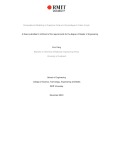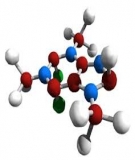
Molecular simulation of nanoparticle
-
The thesis is organised as follows: Chapter 1 comprises the literature review of protein structure, amyloid fibrils and of the effect of nanomaterials on protein aggregation. Chapter 2 reviews the computational methods used to perform simulations and analysis. Chapter 3 comprises my published article on benchmarking forcefields and sampling methods for disordered proteins using amylin as a case study. Chapter 4 comprises my published article on the effect of oxidation on the properties of graphene oxide flakes in solution.
 56p
56p  runthenight04
runthenight04
 02-02-2023
02-02-2023
 12
12
 3
3
 Download
Download
-
In particular, the system undergoes three stages. At first stage the relaxation proceeds slowly so that the energy of system slightly decreases and the samples structure remains amorphous. Within second stage a structural transformation occurs which significantly changes PRDF and DCN for the relatively short time. The energy of the system is dropped considerably and the amorphous structure transforms into the crystalline. Finally, the crystalline sample undergoes the slow relaxation which reduces the energy of system and eliminates structural defects in crystal lattices.
 17p
17p  runordie3
runordie3
 27-06-2022
27-06-2022
 18
18
 3
3
 Download
Download
-
In Molecular simulation of nanoparticle diffusion at fluid interfaces molecular dynamics simulations are used to exam- ine the transport properties of a nanoparticle in both bulk solvent and at a liquid–liquid interface. Specifically it aims to address the effect of interfacial adsorption on the diffusion of nanoparticles (at low concentration).
 5p
5p  hoquangbio
hoquangbio
 22-07-2015
22-07-2015
 27
27
 2
2
 Download
Download
CHỦ ĐỀ BẠN MUỐN TÌM
















